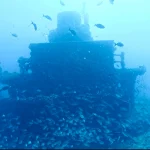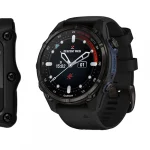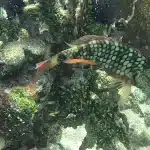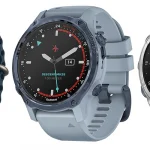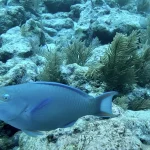Table of Contents
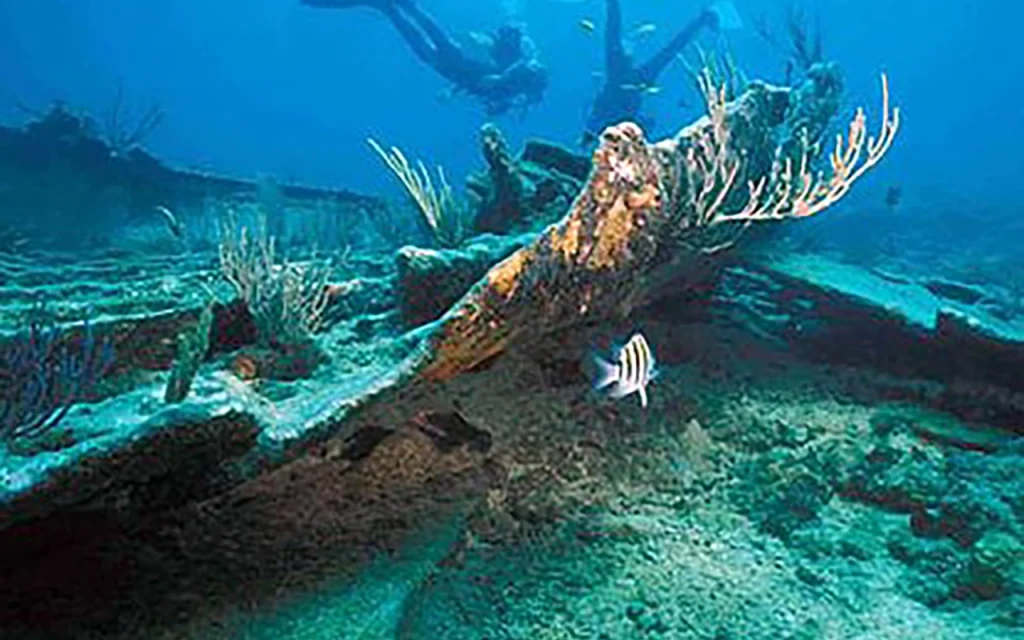
The shallow depth makes the SS Arratoon Apcar wreck site excellent for snorkeling and diving. The wreck is situated close to Fowey Rocks, which is part of the Florida Reef system. It’s worth noting that the ship ran aground on these rocks on February 17, 1878, due to a miscalculation by her captain.
Article at a Glance
- Historical Significance: The SS Arratoon Apcar was built in 1861 and is part of the Biscayne National Park “Shipwreck Trail,” offering divers a glimpse into maritime history.
- Wreck Location: The wreck is situated near Fowey Rocks at coordinates 25° 35.498′ N, 80° 5.728′ W, lying in shallow waters of 10 to 20 feet (3 to 6 meters), making it accessible for divers of all levels.
- Visible Remains: Divers can explore the ship’s lower hull, iron frames, and remnants of structures such as the rudder and mast, all encrusted with vibrant coral growth.
- Marine Life Habitat: The wreck has become an artificial reef, attracting a diverse array of marine life, including various fish species, making it a popular spot for underwater photography.
- Safety Measures: The shallow depth and management by the National Park Service provide a level of safety, but divers should remain aware of potential hazards like surges and strong currents.
- Diving Opportunities: The site is suitable for both scuba diving and snorkeling, allowing a wide range of water enthusiasts to experience the wreck.
- Dive Shops: Several local dive shops, including Dive Miami and Key Biscayne Dive Center, offer guided trips to the SS Arratoon Apcar, providing equipment rentals and expert guidance for a safe diving experience.
The SS Arratoon Apcar Location Coordinates and Depth
Depth
Depth: The wreck lies in 10 to 20 feet (3 to 6 meters) of water near Fowey Rocks
Location Coordinates
Coordinates: 25° 35.498′ N, 80° 5.728′ W
What to Scuba Divers Say About This Ship
- Accessibility: The wreck is highly accessible due to its shallow depth, lying in just 10 to 20 feet (3 to 6 meters) of water. This makes it suitable for divers of all experience levels, including beginners.
- Snorkeling-friendly: The shallow depth also makes it an excellent site for snorkeling, allowing non-divers to explore the wreck as well.
- Marine life: Divers report an abundance of fish around the wreck, making it an attractive site for marine life enthusiasts.
- Historical significance: As one of the five historic wrecks designated as part of the Biscayne National Park “Shipwreck Trail,” divers appreciate the historical context of the site.
- Coral growth: The wreck is described as being encrusted with corals, adding to its visual appeal and ecological importance.
- Visible remains: Divers can still see the coral-encrusted lower hull and iron beams of the vessel, along with some evidence of other structures, including remnants of the rudder and mast.
- Diving conditions: While generally accessible, divers should be aware that the shallow waters near the reef can create strong surges, which may affect diving conditions.
- Photography opportunities: The combination of clear, shallow water, abundant marine life, and the wreck’s structure provides good opportunities for underwater photography.
What Kind of Marine Life Can Be Found on The Ship
- Fish: The wreck is described as a haven for fish, with numerous species making their home around the structure. The shallow depth and the ship’s remains provide an excellent habitat for various fish species.
- Corals: The ship’s remains are encrusted with corals. Over time, these corals have grown on the iron hull and other parts of the wreck, creating a vibrant underwater ecosystem.
- Marine plants and algae: While not explicitly detailed in the search results, the presence of marine plants and algae is mentioned. These likely contribute to the overall ecosystem of the wreck site.
Key Information
| Key Information | Details |
|---|---|
| Ship Name | SS Arratoon Apcar |
| Location | Key Biscayne, Florida |
| Coordinates | 25° 35.498′ N, 80° 5.728′ W |
| Depth | 10 to 20 feet (3 to 6 meters) |
| Year Built | 1861 |
| Historical Significance | Part of Biscayne National Park “Shipwreck Trail” |
| Marine Life | Abundant fish species and coral growth |
| Accessibility | Suitable for divers of all experience levels |
| Dive Shops Offering Trips | Dive Miami, Key Biscayne Dive Center |
| Safety Considerations | Awareness of potential surges and currents |
What Makes SS Arratoon Apcar a Unique Diving Experience
- Historical significance: Built in 1861, the Arratoon Apcar is one of five historic wrecks designated as part of the Biscayne National Park “Shipwreck Trail”. This designation highlights its importance in maritime history and provides divers with a connection to the past.
- Shallow depth: The wreck lies in just 10 to 20 feet (3 to 6 meters) of water, making it accessible to divers of all experience levels, including beginners. This shallow depth also allows for extended bottom times and natural light penetration, enhancing visibility.
- Snorkeling opportunities: Due to its shallow depth, the site is excellent for snorkeling as well as diving, making it accessible to a wider range of water enthusiasts.
- Visible remains: Divers can still see the coral-encrusted lower hull and iron beams of the vessel, along with evidence of other structures, including remnants of the rudder and mast. This provides a tangible connection to the ship’s history.
- Marine life habitat: The wreck has become an artificial reef, encrusted with corals and home to numerous species of fish. This transformation offers divers a chance to observe a thriving marine ecosystem.
- Proximity to Fowey Rocks: The wreck’s location near Fowey Rocks adds to the diving experience, as it provides context for the ship’s demise and offers additional underwater features to explore.
- Part of a larger trail: Being one of the wrecks on the Shipwreck Trail allows divers to explore multiple historic sites in the area, creating a more comprehensive diving adventure.
- Unique wreck story: The circumstances of its sinking, including the near-miss with the Fowey Lighthouse construction platform, add an interesting historical narrative to the dive.
- Photography opportunities: The combination of shallow, clear water, visible wreck structures, and abundant marine life creates excellent conditions for underwater photography.
- Educational value: The site offers an opportunity to learn about maritime history, ship construction, and the process of how shipwrecks become artificial reefs over time.
What is The Full History of This Ship
Building and Early Years
- Construction: The ship was built by James Henderson & Son at Renfrew, Scotland, as yard number 36. It was launched on June 27, 1861, and completed that year.
- Dimensions: The ship measured 261.7 feet (79.8 meters) in length, 35.1 feet (10.7 meters) in beam, and 25.0 feet (7.6 meters) in depth. It had a gross register tonnage (GRT) of 1,493 and a net register tonnage (NRT) of 959.
- Propulsion: The ship was a sail-steamer, with a steam engine rated at 250 NHP. It had three masts and was initially rigged as a barquentine.
Ownership and Operations
- First Owner: The ship’s first owner was Apcar and Company of Bombay, India. It was named after the founder of the company, Arratoon Apcar.
- Operations: The ship was registered at Calcutta and operated under the UK official number 43924 and code letters TRBG. It made regular voyages between Calcutta, Penang, Singapore, and China, taking about two months each way.
- Cargo: The ship carried various cargoes, including opium, which was a significant trade item for Apcar and Company.
Changes in Ownership and Engine
- New Engine: In 1873, the ship was re-engined with a two-cylinder compound engine rated at 160 NHP by Black, Hawthorn & Co of Gateshead.
- New Owner: Henry Frederick Swan acquired the ship in 1873 and registered it in London.
Wreck
- Grounding: On February 17, 1878, the ship grounded on Fowey Rocks while en route from Liverpool to Havana with a cargo of coal. This was due to a miscalculation by Captain Pottinger.
- Rescue: The crew spent three days trying to pump the ship out before abandoning it and heading ashore in lifeboats. The Tappahannock rescued Captain Pottinger and his entire crew of 24 men.
- Wreckage: The ship was a total loss by March 12, 1878, and its remains lie in 10 to 20 feet (3 to 6 meters) of water near Fowey Rocks.
Legacy
- Dive Site: The wreck is now a popular dive site, known for its shallow depth and abundant marine life. It is one of five historic wrecks designated as part of the Biscayne National Park “Shipwreck Trail”.
- Historical Significance: The SS Arratoon Apcar is a significant historical artifact, providing insights into maritime history and the development of steam-powered ships.
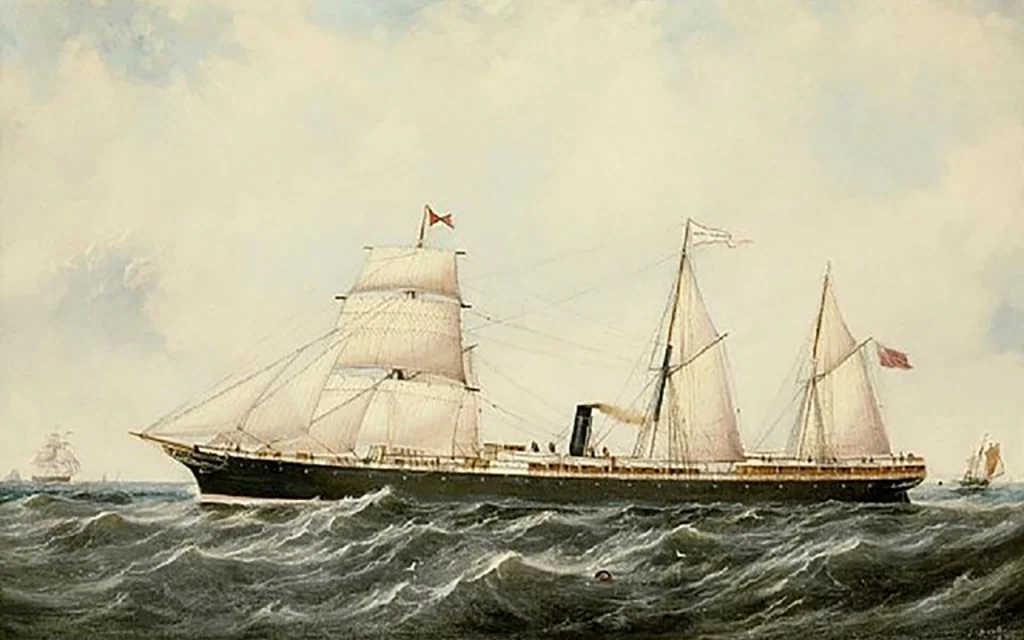
What Historical Features Can Still Be Identified on SS Arratoon Apcar
- Lower Hull and Iron Frames: The lower hull and iron frames of the ship are visible, encrusted with coral. These structures provide a glimpse into the ship’s original design and construction.
- Remains of Other Parts: In addition to the hull and frames, remnants of other parts of the ship, such as the rudder and mast, can still be seen.
- Coral Growth: The wreck is heavily encrusted with corals, which have grown over the years, creating a vibrant underwater ecosystem.
- Marine Life Habitat: The wreck has become a habitat for numerous species of fish and other marine life, making it a popular site for scuba diving and snorkeling.
What Safety Measures Are in Place for Divers Visiting SS Arratoon Apcar
- Shallow Depth: The wreck lies in just 10 to 20 feet (3 to 6 meters) of water, making it accessible to divers of all experience levels, including beginners. However, the shallow depth also means divers need to be aware of potential hazards like surges and strong currents.
- Part of a National Park: As one of the five historic wrecks designated as part of the Biscayne National Park “Shipwreck Trail”, the site is managed by the National Park Service. This provides some oversight and regulation to help ensure diver safety.
- Proximity to Fowey Rocks: The wreck’s location near Fowey Rocks means divers need to be cautious of the reef structure and potential hazards like sharp coral.Proper navigation and awareness are essential.
- Abundance of Fish: The wreck is described as a haven for fish, which could potentially pose a minor safety risk to divers, especially if the fish are feeding or protecting young. Divers should maintain a respectful distance.
- Diver Responsibility: As with any dive site, divers are ultimately responsible for their own safety. Proper training, equipment, and adherence to safe diving practices are critical when exploring the SS Arratoon Apcar wreck.
Dive Shops That Prove Diving Trips to This Shipwreck
- Dive Miami: Offers guided dives to the SS Arratoon Apcar wreck site, including snorkeling and scuba diving trips.
- Miami Diving: Provides diving excursions to the Arratoon Apcar wreck, suitable for all levels of divers and snorkelers.
- Key Biscayne Dive Center: Offers guided dives to the SS Arratoon Apcar and other wrecks in the Biscayne National Park “Shipwreck Trail”.
- Miami Beach Diving: Provides scuba diving and snorkeling trips to the Arratoon Apcar wreck site, highlighting its shallow depth and abundant marine life.
- South Florida Diving: Offers guided dives to the SS Arratoon Apcar and other shipwrecks in the area, including the Half Moon and Sheri Lynn.
South Florida Wrecks
- SS Copenhagen
- Captain Dan Wreck
- SS Arratoon
- Queen of Nassau
- USS Mohawk
- MV Castor
- Esso Bonaire III
- St. Jacques
- The Gilbert Sea
- Shasha Boekanier
- Thozina
- The Orion
- The DEMA Trader
- Ancient Mariner
- The Amaryllis
- The Ande
- USS Hydro Atlantic
- Zion Train
- Mercedes I
- Half Moon
- The Danny
- The Ultra Freeze
- The Doc DeMilly
- Jay Scutti
- The Tracy
- Sea Emperor
- Jim Atria
- Merci Jesus
- Princess Britney

